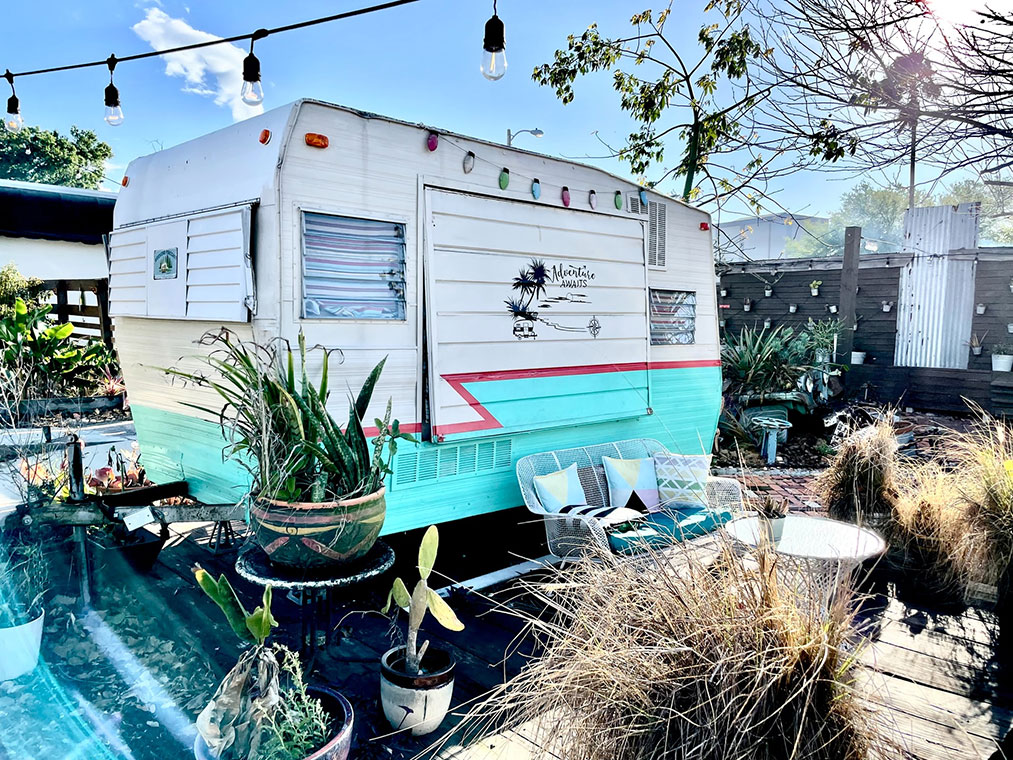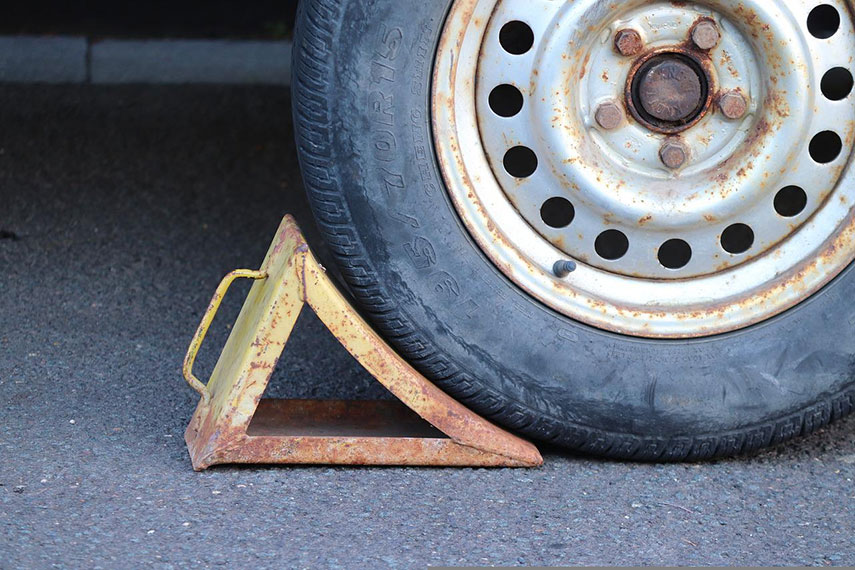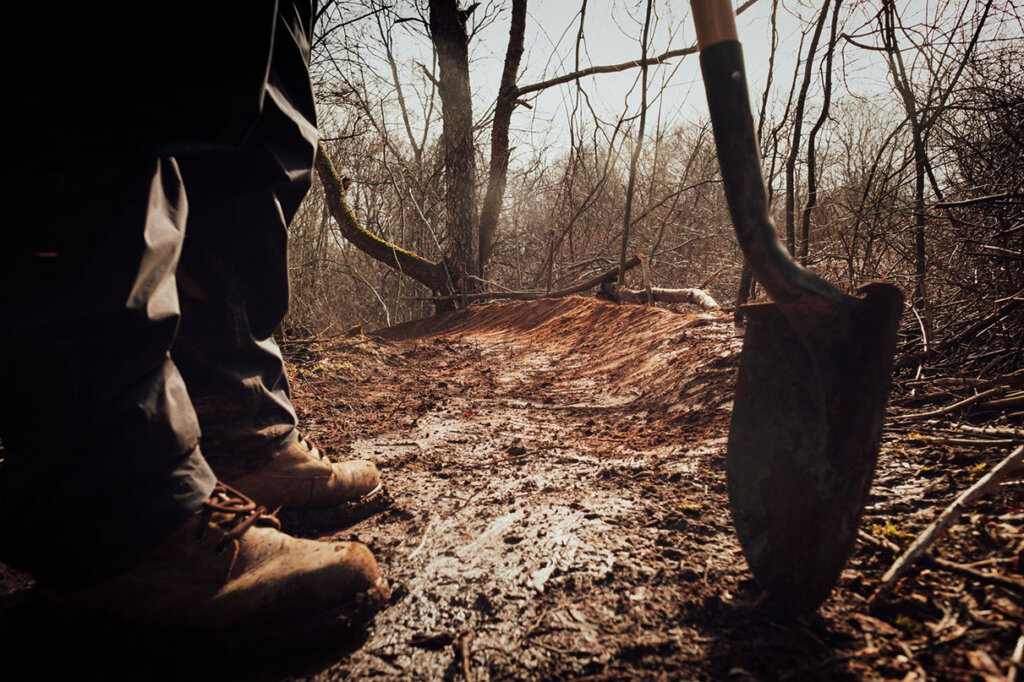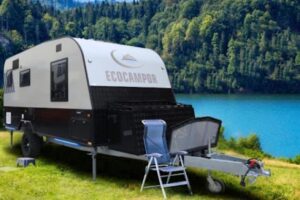This happened to my partner and I once when we were camping in a friend’s pop-up travel trailer. We had been driving around for around an hour searching for a spot when we finally found it: the perfect spot by the river! It was a very hot Colorado day and we were quite eager to jump in the river so we quickly parked the camper, unhitched, parked the Subaru, and ran into the cool water.
It was only after we swam, drank a beer, opened the pop-up part of the trailer, and essentially fully set up camp that we realized the trailer was not as level as previously thought, and that we could tell it was out of level while laying on the bed. This is a serious no-no for me, I just cannot sleep on an unlevel bed.
Lucky for us, we were able to rock the trailer back and forth until it had enough momentum to roll up onto a leveling block. I do not suggest trying this though. Trying this puts you at risk of losing control of the trailer if it begins rolling unhitched, downhill. I was just being young and reckless.
So what is one to do when they want to safely level their rig without hitching the car back up?
How to Level a Camper Without Moving It

After our little camper-leveling fiasco, I did a bit of research to see if other RVers have encountered this same situation in the past. I found that it’s not super common, but it’s also not completely unheard of. Here are the clever ways that people have found to level their campers without moving them.
Please note that these techniques are aimed at small to medium sized travel trailers like this sweet forward folding trailer from EcoCampor. If you have a big rig you’ll have to take a different approach in order to avoid injury to your camper, yourself, or others.
Bottle Jacks and Leveling Blocks
This solution is great because it utilizes a tool that you will almost definitely have on hand while camping: the bottle jack.
A bottle jack is a tool used to lift automobiles for the purpose of performing maintenance. They are bottle shaped, hence the name, and typically provide lift through hydraulics, though some operate by screw-action.
If you don’t think your car or truck has one, do some deep digging in parts of the interior that you’ve never explored and I bet you’ll find one. They are sometimes stored in the chassis but that’s pretty uncommon.
You will need the following items in order to attempt this leveling technique:
- Bottle jack
- Leveling blocks
- Scrap plywood or lumber (if the ground is soft)
- Tire chocks

So to start, you’ll want to fully chock the tire on the high side of the rig and support the front end of the trailer by lowering the tongue jack. These actions will provide stability and safety during the operation.
Next, bring your bottle jack and scrap wood over to the side you need to be raised. Situate the bottle jack underneath the rig where the suspension connects to the frame. If the ground is soft, you will need something to distribute the weight of the rig while lifting, otherwise, the jack will simply sink into the ground-this is what the scrap wood is for.
Double-check that the weight rating of the jack is enough to handle the weight of the rig. If everything checks out, begin jacking up the trailer nice and slow. Lift the trailer past the point of the level, and position leveling blocks underneath the tire.
If your bottle jack is not rated to lift a load as heavy as your trailer, DO NOT attempt this method. Also, NEVER position your body underneath a rig that is being supported solely by a bottle jack. Do all of this work while keeping body parts well clear of being crushed if the jack fails.
Once the leveling blocks are in place, release the bottle jack and let the rig settle onto the blocks. Ideally, you will be nice and level at this point. If you are not, repeat these steps, adding leveling blocks incrementally until the rig rests where you want it.
Digging

This is a very simple method that I have used more than once to level my truck while camping. It’s simple, fairly quick, and requires only one tool: a trusty shovel.
Whereas in the aforementioned technique you are attempting to raise the low side of the trailer, in this technique you will aim to lower the high side of the trailer.
Grab your shovel and start digging around and underneath the tire on the high side of the trailer. As you weaken the soil supporting that tire, the weight of the trailer will cause it to slowly settle into the hole. Continue this action until the trailer is nice and level.
Please, please, please dig carefully. I don’t want to get any flack if someone attempts this and ends up popping a tire because of reckless digging. Don’t drink and dig.
This technique does have several potential drawbacks:
- You will cause some degree of damage to the ground that your trailer is resting upon. I can only see this being an issue if you happen to be parked on a nice, manicured lawn.
- If the ground is too hard or full of rocks, the digging may be miserable and somewhat futile. This technique works best in regions that have loose soil.
Finishing the Job
Regardless of which method you chose, let’s assume that your trailer is nice and level and you want to keep it that way.
First, check both tires so your trailer doesn’t roll away.
If you have stabilizer jacks, lower them as you normally would, so that they stabilize the camper without supporting too much of its weight. These jacks are designed to stabilize, not lift. Subject them to too much weight and they might break or cause frame damage.
If you do not have stabilizer jacks, use wooden blocks to stabilize each corner of the trailer.
It’s also worth mentioning that this task is a lot easier when the camper has levels installed on it. Not sure what trailer levels are or how to install them? Give this article a read and find out.
Boom! Level
If you succeed with either of these techniques, you should now have a stable and level camper to enjoy. Just remember to use extreme caution while manipulating anything as large and heavy as a camper. One wrong move and you risk extreme property or body damage.
The easiest way to avoid this hassle is to ensure your camper is level before unhitching it. But should you happen to end up in a pickle and need to level your camper without moving it, I hope you now have the tools and knowledge to get the job done.







